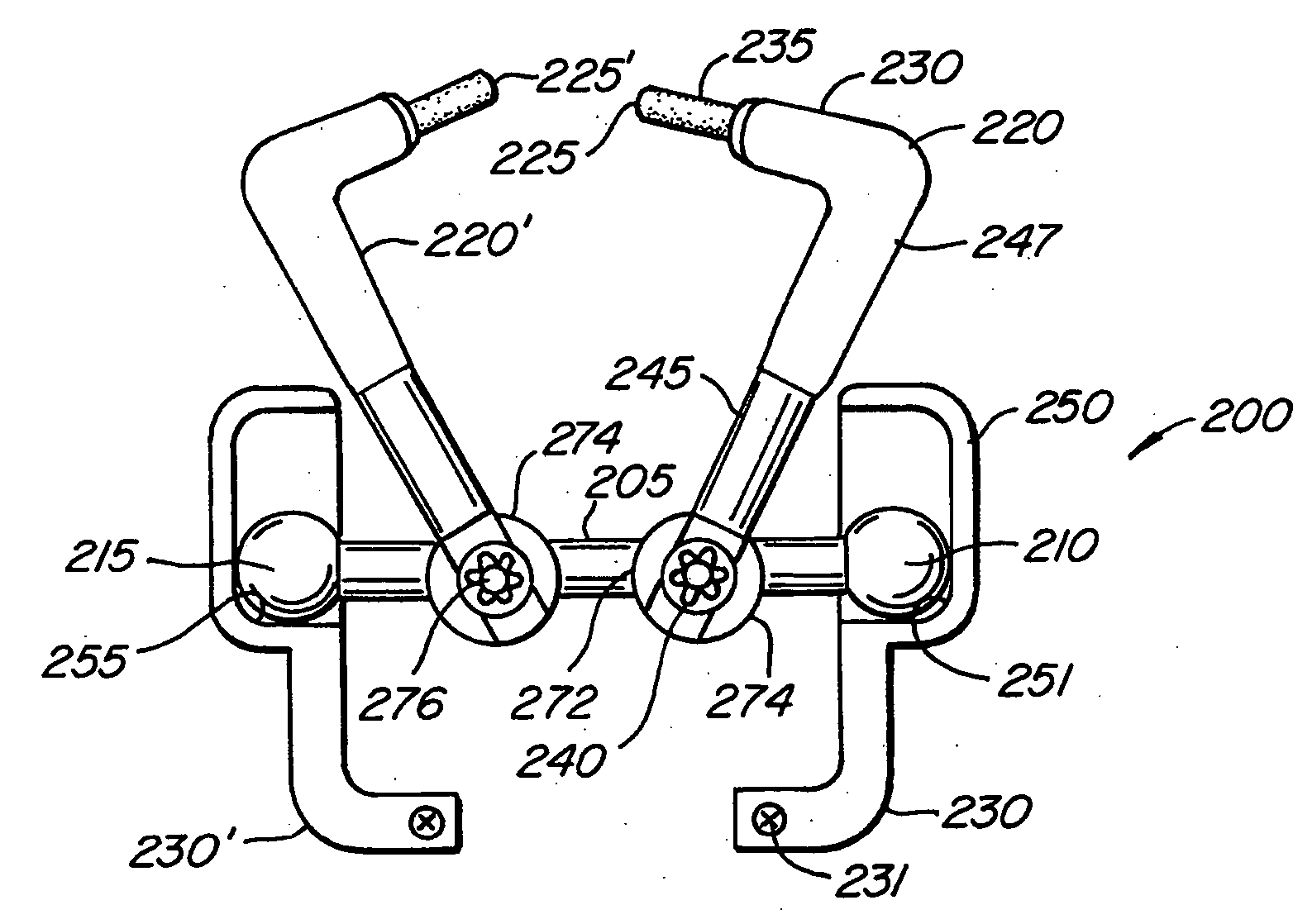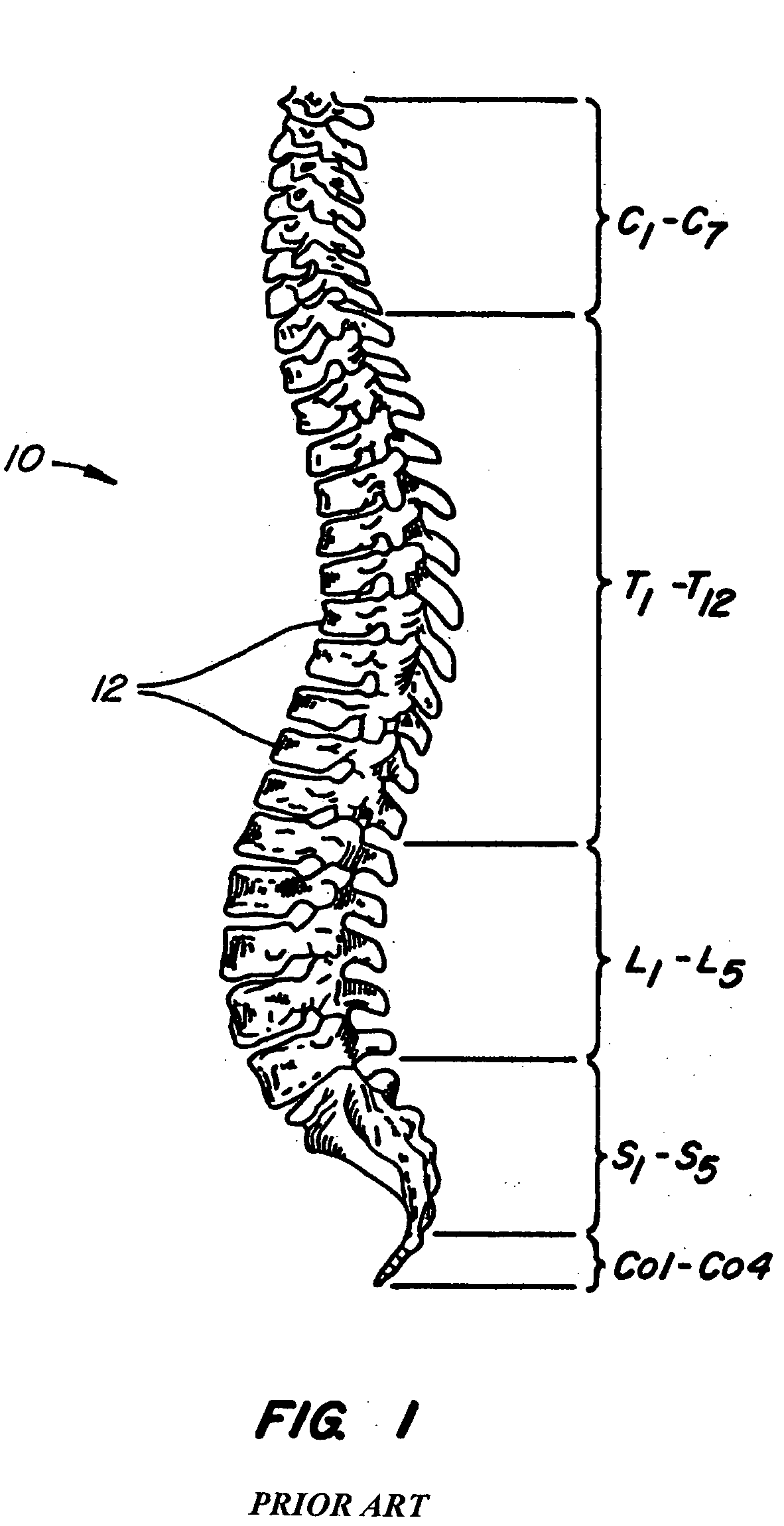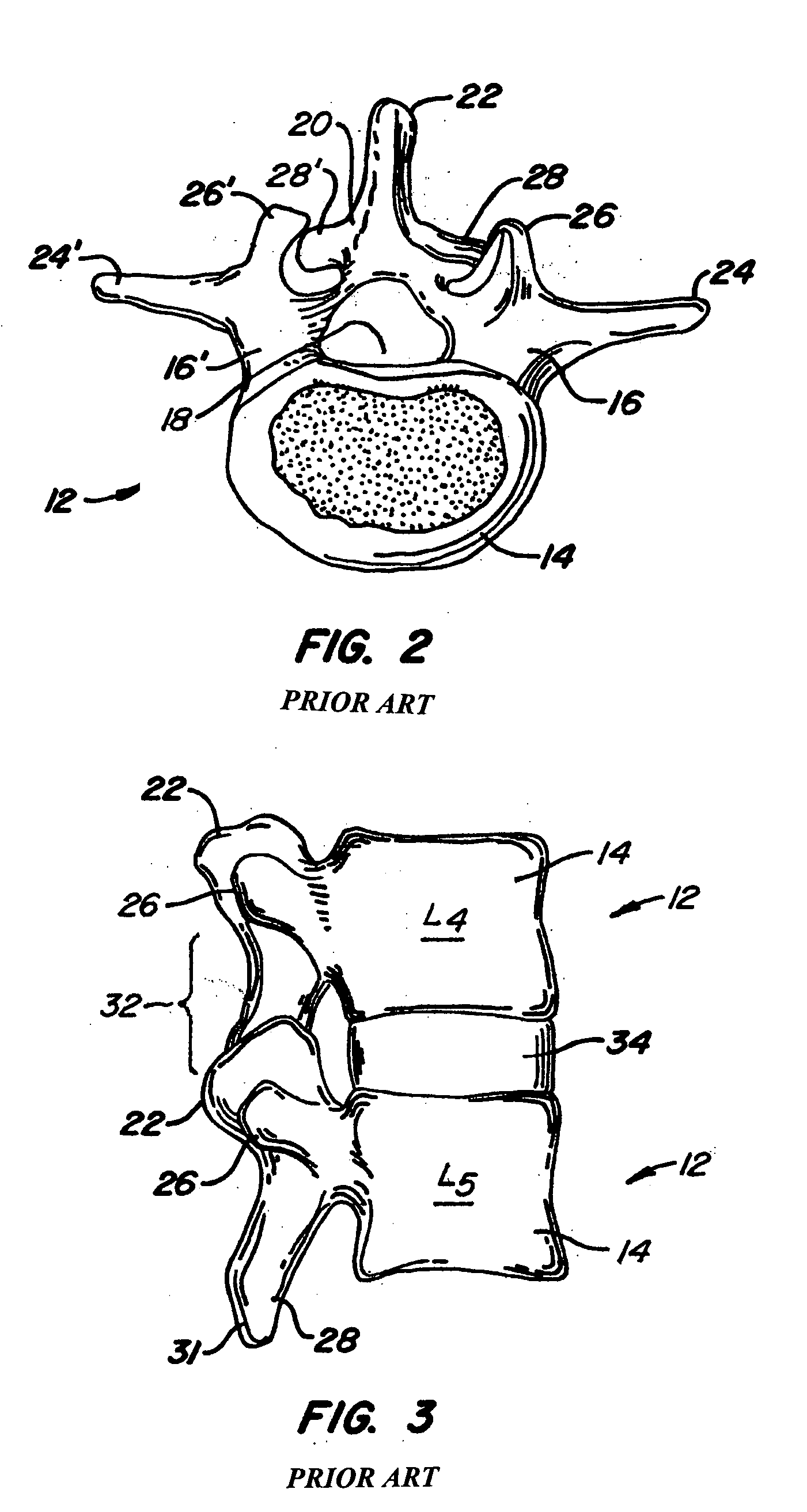[0011] One aspect of the present invention includes the realization that there exists a need for a device for use on
adjacent level facets that provides stabilization and protects the joint between two adjacent vertebra that are adjacent a fused or immobilized section of spine. There also exists a need for a
system and / or device that can be attached at a
spinal level already containing pedicle screws and / or other types of
spinal instrumentation (including
spinal fusion hardware such as rods and screws or other types of fusion and / or non-fusion
spinal instrumentation) that relieves stress experienced by the unfused levels vertebra. Moreover, there exists a need for a
facet joint replacement
system having components that can be selectively attached to pre-existing spinal hardware (and / or can be used with limited modifications to the pre-existing spinal hardware or hardware added for treating various surgical conditions) as well as to various
anatomical structures, including the lamina, pedicles and / or directly to the
vertebral body or bodies (or some combination thereof, including simultaneous anchoring to spinal hardware and anatomical locations), as desired by the physician. Furthermore, there exists a need for a
facet joint replacement
system that can be implanted into vertebral levels which desirably reinforces and / or stabilizes the
facet joint /
intervertebral disc complex adjacent and / or in the vicinity of one or more fused spinal levels, to treat, reduce and / or prevent the onset of adjacent level disease in one or more non-fused spinal segments. Furthermore, there exists a need for a facet joint and
intervertebral disk replacement system that can be used to revise or “take down” and already-fused
spinal segment (or segments) and restore partial or full natural motion to that segment or segments. Furthermore, there exists a need for a facet
joint replacement system that can be used to revise one or more fused levels of a multi-level arthrodesis, such that motion can be restored to at least a portion of the multi-level arthrodesis (i.e., one section of a four level arthrodesis can be “taken down”, leaving two single-level arthrodeses separated by an articulating section containing the facet
joint replacement system.
[0013] In another embodiment of the invention, an implantable spinal
restoration device comprising: an elongated member configured to extend along a portion of a length of a spine adjacent a cephalad vertebra and a
caudal vertebra; an attachment mechanism adapted to attach the elongated member to a portion of the spine; a facet
arthroplasty element; a support component having a first end and a second end sized to span a portion of the
vertebral body and adapted to receive the facet
arthroplasty element at the first end and the second end; and a connector adapted to connect the support component to the elongated member. Embodiments can also include an arm with a bone engaging end adapted to attach to a vertebra at a first end and adapted to attach to the support component at a second end. The arm can also be configured to engage a caudal vertebral body and / or a cephalad vertebral body. A second arm can also be provided having a first end adapted to engage a vertebral body at a first end and second end adapted to engage the crossbar. The first arm can be configured to articulates relative to the second arm. The support component can also be configured such that it is sized to span a portion of a vertebral body between a left lamina and a right lamina, such as a portion of a vertebral body between a left pedicle and a right pedicle. Thus, the support component can be further adapted to have an adjustable width. Additionally, the facet arthroplasty element is positioned relative to the support component to provide a symmetric anatomical solution. The facet arthroplasty element can also be positioned relative to the support component to provide an asymmetrical anatomical solution. Additionally, the ends of the support component are adapted to receive an opening in the facet arthroplasty element. The facet arthroplasty element can also be selected from a plurality of facet arthroplasty elements each having an opening with a different depth. Embodiments of the invention can provide for even distribution of the weight on the vertebral body.
[0014] A further embodiment of the invention includes an adaptable implantable spine stabilization device, comprising: a crossbar having a first end and a second end; a pair of vertebral engaging elements each having a bone engaging end and an end adapted to couple to the crossbar; and a pair of anchoring elements each having a first end having a surface adapted to receive a crossbar end and second end adapted to fix the anchoring element to a spinal
fusion system. The device can further comprise an arm with a bone engaging end adapted to attach to a vertebra at a first end and adapted to attach to the support component at a second end. Further, the arm can be configured to engage a caudal vertebral body or a cephalad vertebral body. The second arm of an embodiment can be configured to engage a vertebral body at a first end and second end adapted to engage the crossbar. In such an instance, the first arm can be configured to articulate relative to the second arm. Further, the support component can be sized to span a portion of a vertebral body between a left lamina and a right lamina, or span a portion of a vertebral body between a left pedicle and a right pedicle. The support component may be further adapted to have an adjustable width. Embodiments of the invention can provide positioned relative to the support component to provide a symmetric anatomical solution, or an asymmetrical anatomical solution. The ends of the support component can also be adapted to receive an opening in the facet arthroplasty element. Additionally, each facet arthroplasty element can be selected from a plurality of facet arthroplasty elements each having an opening with a different depth. The weight can also be evenly distributed on the vertebral body using the support component.
[0015] An embodiment of the invention includes a method for revising
spinal fusion surgery to provide support to adjacent vertebra comprising: accessing a spinal location having a spinal fusion device, comprising a pair of elongated members, attached adjacent a caudal vertebral body and a cephalad vertebral body; attaching a facet arthroplasty device comprising an articulating attachment mechanism adapted to receive a crossbar and an attachment mechanism adapted to connected to the elongated member of the spinal fusion device; and closing the wound. In a method of an embodiment, the vertebra adjacent the spinal fusion device are stabilized.
 Login to View More
Login to View More  Login to View More
Login to View More 


